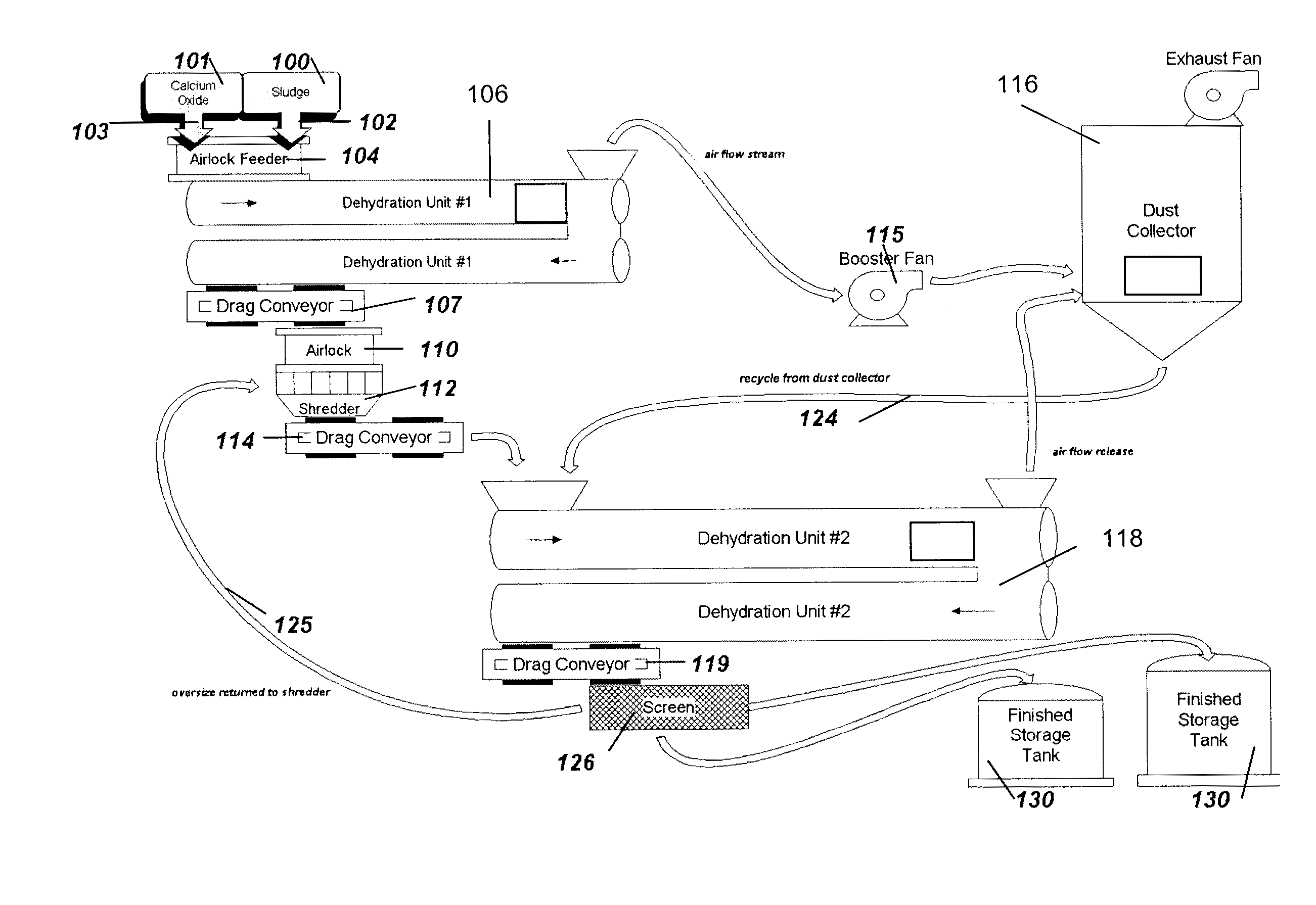Granulated plant nutrient
a plant nutrient and granulated technology, applied in the direction of calcareous fertilisers, multiple-effect evaporation, separation processes, etc., can solve the problems of reducing the amount of landfill available, noxious odor, long-term problem of municipal sludg
- Summary
- Abstract
- Description
- Claims
- Application Information
AI Technical Summary
Benefits of technology
Problems solved by technology
Method used
Image
Examples
Embodiment Construction
[0010]The plant nutrient of the present invention comprises municipal sludge and calcium oxide (CaO). The relative amounts of the components are preferably about 75-80% (by weight) of municipal sludge (the sludge is usually about 20% solid matter and about 80% water) and about 20-25% (by weight) of calcium oxide.
[0011]The calcium oxide is preferably in the form of pebbles and serves to eliminate malodor and reduces the water in sludge material to a dry granulated plant nutrient material. In an embodiment, the calcium oxide should have a minimum quality of 94% CaO, preferably greater than 94%, produce a heat rise (due to lime slaking as discussed below) of about 50 degrees F. or greater in 2 minutes, and have particles sizes from ¼″ to ¾″, with a minimum of dust, preferably ¼″ dust free particles (this may be achieved by using a ¾″ calcium oxide and regrinding the material down to ¼″ to maintain quality and heat rise). Many calcium oxide products on the market do not have this level ...
PUM
| Property | Measurement | Unit |
|---|---|---|
| particle size | aaaaa | aaaaa |
| heat | aaaaa | aaaaa |
| size | aaaaa | aaaaa |
Abstract
Description
Claims
Application Information
 Login to View More
Login to View More - R&D
- Intellectual Property
- Life Sciences
- Materials
- Tech Scout
- Unparalleled Data Quality
- Higher Quality Content
- 60% Fewer Hallucinations
Browse by: Latest US Patents, China's latest patents, Technical Efficacy Thesaurus, Application Domain, Technology Topic, Popular Technical Reports.
© 2025 PatSnap. All rights reserved.Legal|Privacy policy|Modern Slavery Act Transparency Statement|Sitemap|About US| Contact US: help@patsnap.com


